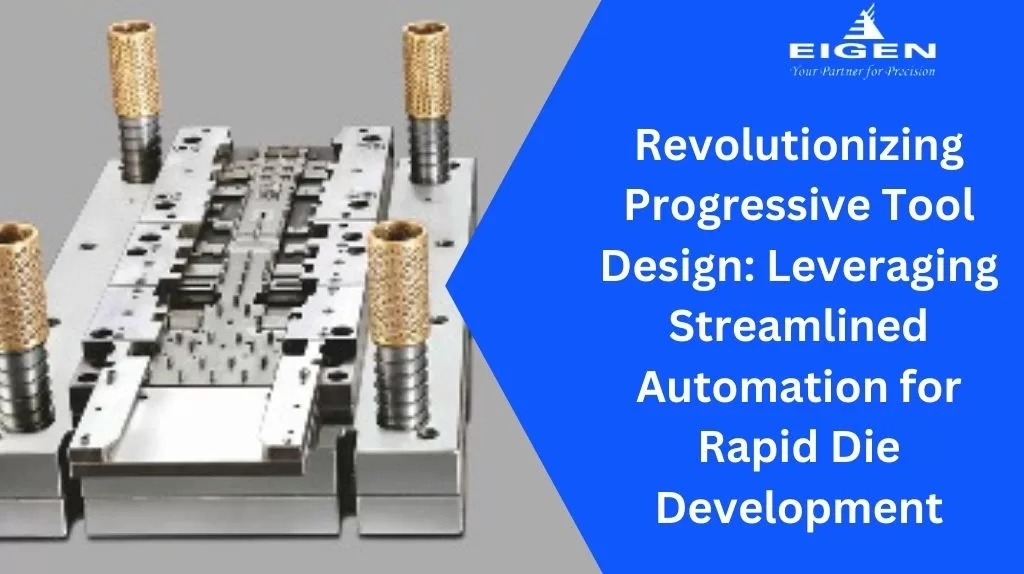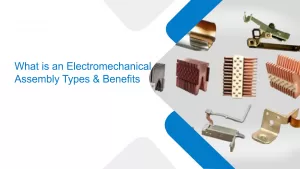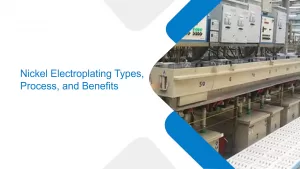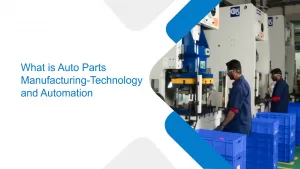Revolutionizing Progressive Tool Design: Leveraging Streamlined Automation for Rapid Die Development
- Progressive Die Stamping |
- Aug 14, 2024

The idea of progressive die metal stamping involves continuously feeding material through a tool’s several die stations. Comparing the method to conventional fabrication or machining, you can produce more parts in less time because of its nature. Progressive stamping offers the lowest cycle times per part for high-volume items. Learn how automation helps in rapid die development and about the further evolution of Progressive die design:
Progressive Die Design Process
Progressive metal stamping is one of manufacturers’ most popular and economical techniques for shaping metal components. However, there are other procedures as well. Components made with progressive die stamping pass through several stations, each with a distinct purpose, such as coining, blanking, punching, or embossing. To achieve the intended outcomes, various functions can be combined and separated based on the needs of the individual parts.
If you want to maximize progressive die stamping, you must comprehend the many die design factors, the operation of the process, and its main advantages.
Why Leveraging Streamlined Automation for Rapid Die Development?
Manufacturers and designers of dies face enormous pressure. End users anticipate, require, and demand ever-higher precision, accuracy, and consistency standards. Clients pressure you to reduce the price you charge for your services and decrease delivery lead times. For time savings, businesses are turning to the automation of time-consuming procedures, and the streamlining of intricate Progressive die design processes.
The following are some best practices for die designers and producers:
- An all-in-one platform for designing dies
- Enhanced automation in production and design
- Advanced Visualization and validation
Contemporary Advancements in Progressive Die-Stamping
The advanced stamping industry changes due to production techniques and technological improvements. You will look at a few of the developments influencing die-stamping going forward:
Robotics and Automation
Automated feeders can place materials precisely and effectively, reducing waste, while robotic arms can handle parts rapidly and precisely. Robots inspect the parts to ensure they adhere to high standards. Because of the rapid process, the output is achieved quickly.
CAD and Simulation
Computer-aided design (CAD) and simulation can be the best allies for progressive die design and improvement. They make accurate process simulation and modeling possible. CAD and simulation enable engineers to solve issues before production. As a result, they speed up product development, save money and time, and reduce the number of prototypes required.
Quick prototyping, as well as customization
Progressive die stamping provides flexible tooling and quick-change die mechanisms. Because of this, designs can be tested efficiently through low-volume production and prototyping before committing to mass production.
How long does it take to get a progressive stamping process up and running?
Factors such as die complexity, part complexity, and operator expertise can all impact how long it takes to set up a progressive stamping operation using progressive tool design. Set up can take place in a few minutes to several days. Ensuring everything is properly calibrated for production involves putting the die into the press, aligning material feed systems, and using test stamps.
Are small manufacturing runs suitable for progressive stamping?
With its early setup and tooling expenses, progressive stamping dies are more adaptive for short runs, even if they provide the best value for large-volume manufacturing. Flexible tooling and fast prototyping have made smaller-batch progressive die stamping possible.
Different Stamping Techniques vs. Progressive Die Stamping
Because of its various advantages in lead periods, manufacturing times, and overall cost, progressive die stamping is frequently chosen over alternative stamping techniques.
Compound Metal Stamping
Compound metal stamping involves passing a metal strip through a compound die, which completes all stamping processes in a single stroke. This method is best suited for projects needing medium-to-high-volume manufacture of flat parts. For larger parts with more complicated design aspects, compound die stamping may be slower than progressive die stamping, which allows quick production speeds regardless of part complexity.
Transfer Die Stamping
One of the primary distinctions between progressive die stamping and transfer die stamping is that the workpiece is initially detached from the metal strip. After that, the workpiece is moved between a few workstations to finish the portion. This method works perfectly with larger pieces difficult to feed through die-stamping stations and intricate designs.
Traditional Metal Stamping
Stamping processes in traditional metal stamping frequently make use of stage tooling. Although stage tooling is less expensive to set up, the cost per piece is the greatest. Although the initial expenditures are greater, the costs per piece are reduced when using progressive die tooling. Regarding speed and output, progressive die stamping is quick and appropriate for larger production runs, whereas stage tooling is slower and better suited for smaller, less frequent production runs.
What does progressive die stamping add to the sustainability of manufacturing?
Progressive die stamping makes multiple contributions to sustainability. It decreases the environmental impact of recycling sophisticated materials. Automated precision saves energy used in making flawed parts, resulting in higher energy efficiency. These characteristics make progressive die stamping a viable choice for industrial companies trying to lessen their environmental impact.
Bottom Line:
We at Eigen are responsible for precise and meticulous Progressive die design, whether you need it for your automotive or electrical industry. Put your trust in us today, as we are well known for our constant evolution and attention to detail.
Ujjwal handles crucial roles like AGM Marketing, researcher, and is an author for KDDL – Eigen. He currently works with Eigen for implementing proven techniques and strategies for marketing plans on online and offline platforms. An expert in efficiently executing SEO, SEM, email marketing, social media marketing, PR marketing, Print campaigns, etc. Ujjwal has coordinated an efficient marketing team on various creative campaigns and programmatic buying to support various digital cross-promotion efforts. Implement efficient search optimization strategies with the help of collateral material and metrics.
In his former years, Ujjwal has years of experience in a managerial role for several reputed companies. His years of experience combined with the flair of writing help him come up with result oriented strategies for Eigen.




